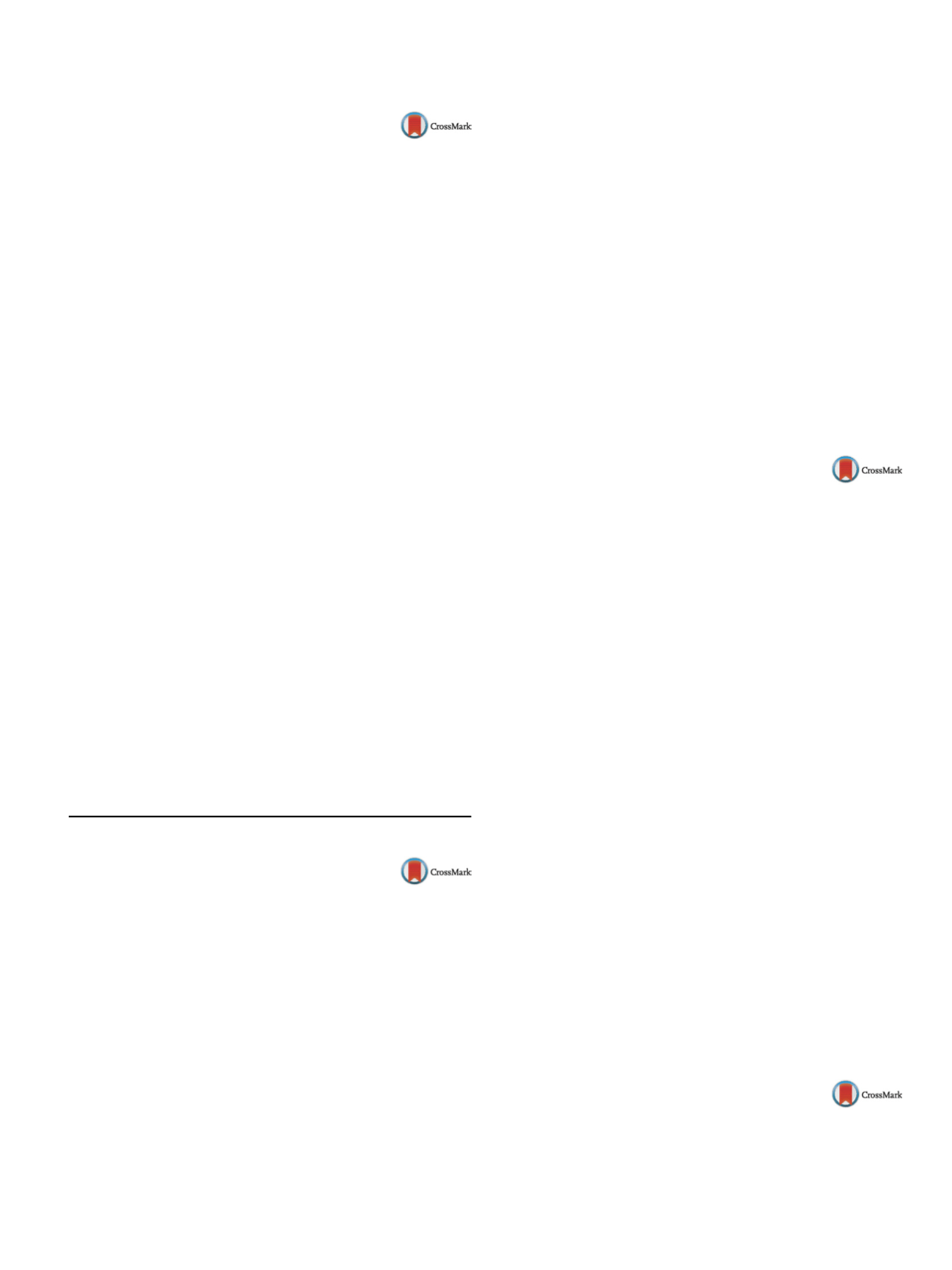

25th European Congress of Psychiatry / European Psychiatry 41S (2017) S645–S709
S673
EV0824
The effect of a sleep-hygiene
education and sleeping pill reduction
program for hospitalized cancer
patients at a general hospital
S. Youn
∗
, B. Park , S. Lee , C. Kim , S. Chung
Asan medical center, Psychiatry, Seoul, Republic of Korea
∗
Corresponding author.
Objectives
Sleep disturbances are common among cancer
patients. Especially during hospitalization, not only adverse med-
ical conditions but also ward environments can affect sleep. We
have developed a program of sleep-hygiene education and sleep-
ing pill reduction for inpatients (the i-sleep program) and applied
it to cancer patients. This study aimed to explore the effect of the
program.
Methods
In a general hospital with 2,715 beds, we estimated the
proportion of inpatients prescribed hypnotics at admission to and
discharge from the department of oncology before (2014) and after
(2015) the program. In addition, we estimated the proportion of
inpatients prescribed hypnotics among all inpatients in the depart-
ment of oncology on the first day of each month of 2014 and 2015.
Results
A total of 12,382 patients (2014, before) and 12,313
patients (2015, after) were admitted to oncology department of
Asan Medical Center. The proportion of inpatients prescribed hyp-
notics as discharge medication among inpatients who had been
prescribed them at the time of admission decreased significantly,
from 76.0% (2014) to 69.8% (2015), after the program (
RR
= 0.92,
95% CI: 0.87–0.98). The proportion of inpatients newly prescribed
sleeping pills after admission to the hospital did not significantly
decrease (4.03% to 3.98%;
RR
= 0.99, 95% CI: 0.87–1.12). The mean
prescription rate of sleeping pills per day was 10.02% in 2014 and
7.99% in 2015 (
P
= 0.03).
Conclusions
Although the i-sleep programdid not reduce the pre-
scription rate of sleeping pills per day, it effectively reduced the
proportion of cancer patients who continued to take sleeping pills
from admission until discharge.
Disclosure of interest
The authors have not supplied their decla-
ration of competing interest.
http://dx.doi.org/10.1016/j.eurpsy.2017.01.1154e-Poster Viewing: Others
EV0825
Screening for cognitive disorders in
elderly diabetics
I. Baati
1 ,∗
, I. Abida
1, S. Omri
1, S. Ellouze
1, F. Hadj Kacem
2,
L. Affes
2, M. Abid
2, J. Masmoudi
11
Psychiatry “A” Department, Hedi Chaker University Hospital, Sfax,
Tunisia
2
Endocrinology Department, Hedi Chaker University Hospital, Sfax,
Tunisia
∗
Corresponding author.
Introduction
Old people with diabetes are more likely to develop
cognitive impairment, Alzheimer’s disease and vascular dementia.
However, the determinants of the association between diabetes
and cognitive impairments are only partially known.
Objectives
To evaluate cognitive disorders in elderly diabetic
patients and to identify risk factors of cognitive impairment in this
population.
Methods
It was a cross-sectional study. It involved outpatients
aged 65 and older, who were followed for diabetes in the
endocrinology department at the Hedi Chaker University Hospi-
tal in Sfax (Tunisia), from October 1 to December 31, 2015. For
each patient, we collected sociodemographic, clinical and thera-
peutic data. We used the Montreal Cognitive Assessment (MoCA)
to identify mild cognitive decline (score < 26/30).
Results
We identified 70 patients, all with type 2 diabetes. The
average age was 66.8 years. The sex ratio (M: F) was 0.7. The
mean duration of diabetes was 14.76 years. The average MoCA
score was 20.68
±
6. Forty patients (57%) had cognitive decline. The
cognitive impairment was statistically correlated with female sex
(
P
= 0.02), low level of education (
P
= 0.00), high levels of glycated
hemoglobin (Hb A1c
≥
7%) (
P
= 0.00), presence of hypoglycemic
episodes (
P
= 0.05) and presence of dyslipidemia (
P
= 0.00).
Conclusion
Our study confirmed the high rate of cognitive decline
in older type 2 diabetes patients. The profile of subjects at risk was
consistent with the literature: poorly controlled diabetes, severe
recurrent hypoglycaemia and associated dyslipidemia. Acting on
these risk factors would prevent cognitive decline and therefore
progression to dementia.
Disclosure of interest
The authors have not supplied their decla-
ration of competing interest.
http://dx.doi.org/10.1016/j.eurpsy.2017.01.1155EV0826
Girls spend more time to be generous
in first offer
Sobhan Aarabi
1 ,∗
, Ebrahim Brazegar
1, Monir Shayetehfar
1Neuroscience Institute, Sports Medicine Research Center, Tehran
University of Medical Sciences, NO 7. Jalale AleAhmad Highway,
14395-578 Tehran, Iran
∗
Corresponding author.
E-mail address:
Sobhan.ae@gmail.com(S. Aarabi)
Introduction
Fairness is a fundamental factor for prosocial behav-
iors and have a crucial role in social interaction. Examining fairness
during maturation can shed light on different questions and
hypothesis about the development of prosociality across life span.
Objectives
The purpose of this studywas to investigate the devel-
opment of strategic planning in children and adolescents.
Methods
A total of 288 healthy students between ages 7 and 18
from four community schools participated in a one-shut run game
which the participants were proposed and should set a package of
offers concluded six suggestions.
Results
Among 288 students, 128 (44.44%) participants were
male and 160 (55.56%) participants were female. In first offer, 29.7%
of boys suggested an unfair offer but girls with 23% were more
generous. However, in last suggestion in comparison with girls
(73% unfair), boys showed more generosity (64% unfair). Notably,
girls in average, spent 135.78 seconds (SD = 86) to set their offers
while boys needed less time to prepare their suggestions (117.16s,
SD = 119.7)
Conclusion
According to the findings it seems that both genders
start more generous offers and end up with less generous offers. In
comparison with boys, girls need more time in economic decision-
making and interestingly more fair options at the start of game.
Disclosure of interest
The authors have not supplied their decla-
ration of competing interest.
1
Sports Medicine Research center
( http://smrc.tums.ac.ir).
Tel: +98 21 886 302 278.
http://dx.doi.org/10.1016/j.eurpsy.2017.01.1156EV0827
Neurocognitive profile among Omani
who have sustained traumatic brain
injury with post-concussion
syndrome
M. Albalushi
Oman medical speciality board, psychiatry, Muscat, Oman


















